Modern GPUs are much more complex processors than their predecessors as they perform a wide variety of tasks that were previously limited in scope or done by the CPU. They do this because their underlying architecture is superior to a CPU's when it comes to handling large amounts of data or computations. This is why we have seen them increase in demand at the higher end with more specialized versions available to help train AI models and also perform simple tasks like accelerating web browsers' ability to display content.
However, a substantial amount of these GPUs are used for gaming with industry leader Nvidia drawing a large chunk of its revenue base from the sales of these graphic cards. They enable you to play the latest game titles in all their glory while handling key functions such as rendering images, handling shadow details, ray tracing (and recently, path tracing), and compiling shaders for use in the latest games.
Given the enormity of the GPU market which was estimated to be worth as much as $40 billion last year, there are options in various shapes, sizes, and prices to accommodate everyone looking for a GPU. The team at GameRant has made a list of some of the best and most popular GPU options you might consider for an upgrade or a new PC build altogether.
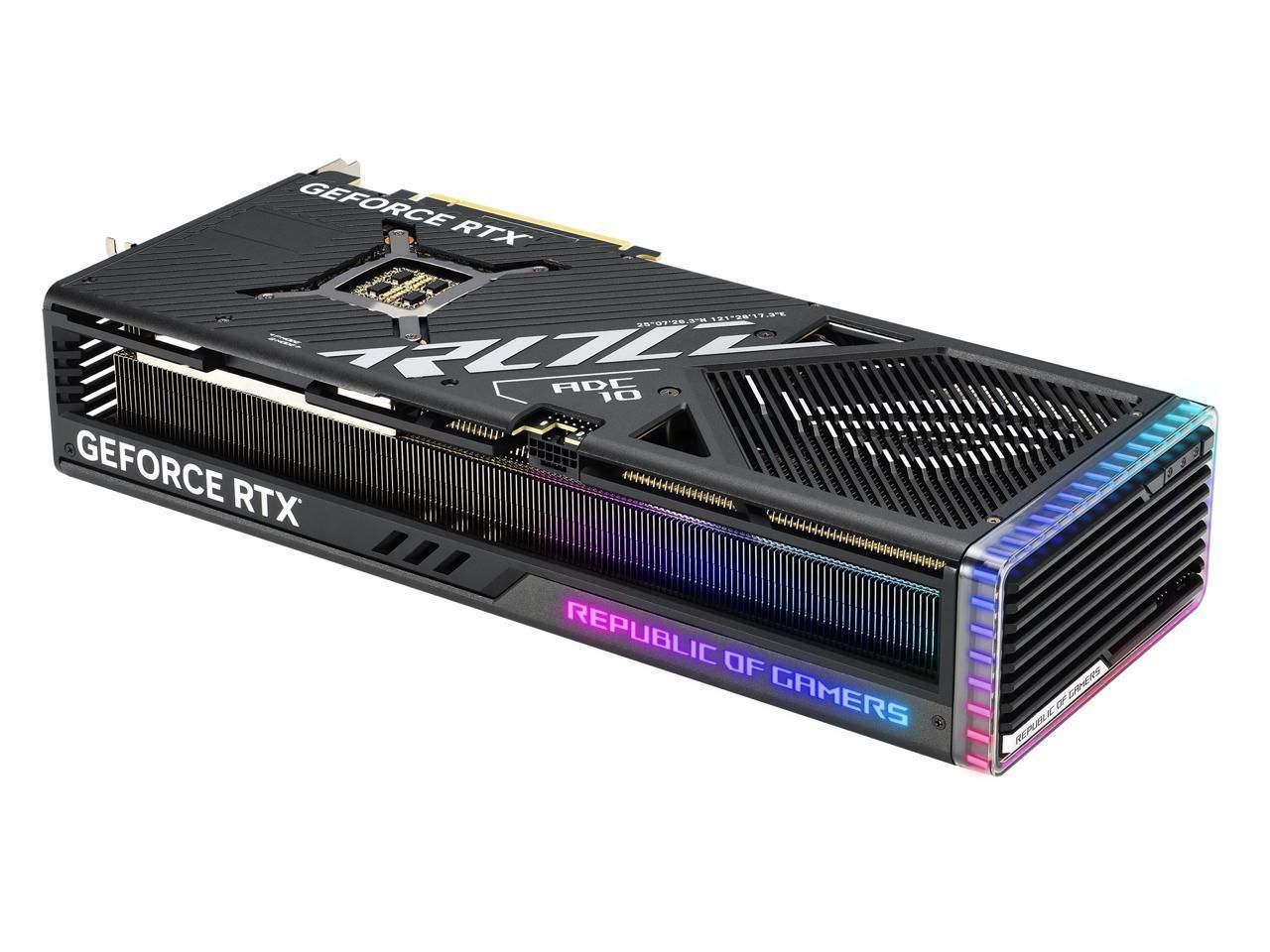
ASUS ROG Strix GeForce RTX 4090 OC Edition
The Best There Is
The ASUS ROG Strix GeForce RTX 4090 OC Edition may be one of its largest GPUs ever, but the patented design supports the most potent overclocking potential out of its peers. With a vapor chamber in tow, the ROG Strix comes in both black and white and does not disappoint in either looks or power. It is easily the most powerful 4090 out there, clocking at a stable 3120 Mhz in our own tests.
- Brand
- Asus
- Cooling Method
- Air-Cooled w/Vapor Chamber
- GPU Speed
- 2640 Mhz
- Memory
- 24 GB GDDR6X
- Power
- 600W
- Boost Speed
- 2640 Mhz
- Is both the fastest and the most overclockable GPU in the market
- Has some of the best cooling mechanisms we have every seen on an air-cooled, vapor-chamber based GPU
- Has an excellent 24-Phase VRM that ensures it remains stable at full load and custom overclocks
- Undervolts quite well compared to the competition, delivering exceptional performance at much higher efficiency levels
- Pricier than a stock RTX 4090 by a considerable margin
- Availability remains a consistent issue with scalpers repeatedly buying out stock from retailers
The ASUS ROG Strix GeForce RTX 4090 OC Edition is a mainstay (and will be until a better option appears) on most of our lists that will mention performance. This is because it is the fastest consumer-grade GPU money can buy. It also offers steady overclockability and excellent, if subtle RGB lighting on top of what is arguably the best vapor chamber cooling we have seen in a mainstream GPU.
Paired with an excellent 24-phase VRM, the ASUS flagship can handle up to 600W the GPU is capable of drawing with ease along with your undervolting and overclocking needs and while our test unit had minor (but audible) coil whine, it did boost to some of the highest clocks out of the box we have been able to push an RTX 4090.
The price however is anything but mainstream with the GPU clocking in at about $2000 with scalpers buying up stock repeatedly and pushing prices even higher at times. A good example is the white version of the GPU that remains in short supply to date and has been price gouged to users who want the best of the best bar none. But then that is what the ASUS ROG Strix GeForce RTX 4090 OC Edition is: The best performance variant of the king of the hill GPU in 2023.
Update August 2023: The RTX 4090 remains a formidable GPU in 2023 with no direct alternatives in its performance class; AMD's RX 7900XTX only trades blows with Nvidia's RTX 4080 at best. The Strix has stood the test of time in this case much like its underlying GPU. It remains the best mainstream RTX 4090 SKU money can buy and as a result, seems to hover around the premium price of $2000. Most of its competitors that have seen their prices fall slightly as they vie for a thinner GPU market in 2023. Even still, the Strix holds its own simply by being the best RTX 4090 money can buy to date.
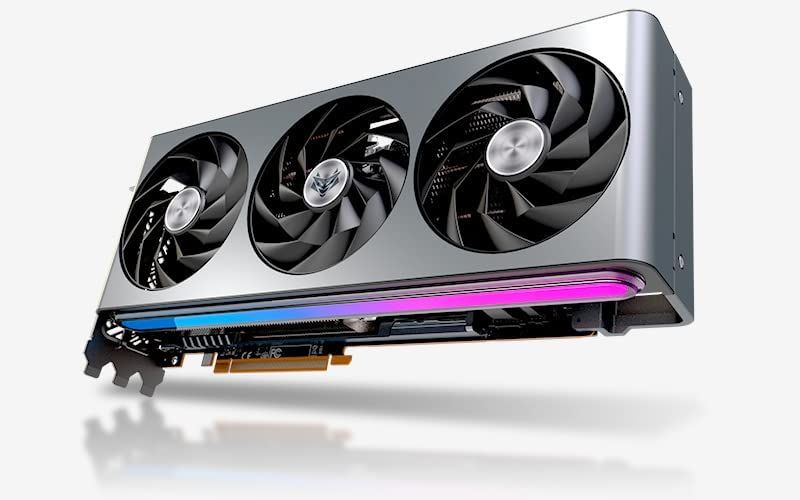
Sapphire AMD Radeon NITRO+ RX 7900 XTX Vapor-X
Premium Looks meets Premium Cooling
The Sapphire Nitro lineup is synonymous with the highest-end AMD 3rd-party GPU offerings in the market. The Nitro+ doubles down on this with the highest-in-market clocks and a vapor chamber that outperforms the stock design considerably while trading at a significant premium over competing 7900XTX-based products
- Brand
- Sapphire
- Cooling Method
- Vapor Chamber
- GPU Speed
- 2510 Mhz
- Memory
- 24GB GDDR6
- Power
- 420W
- Boost Speed
- 2680 Mhz
- Runs silently after a bit of tweaking with temperatures well normal bounds
- Implements a much better cooling solution than the stock XTX offering from AMD itself
- Has an unlocked bios that can be modified to eke out more performance
- Readily available as a top tier unit compared to the competition which has some elusive top of the line variants
- Premium build quality with looks to match
- Price - Trades at a premium vs the stock unit which already costs $999
- Has somewhat limited ray tracking performance compared to Nvidia's offerings
AMD's RX 7900XTX is the current fastest GPU from Team Red in the market, and it should come as no surprise that the Sapphire AMD Radeon NITRO+ RX 7900 XTX Vapor-X takes the top spot when it comes to finding the best AMD GPU possible. This is because it improves on the gains the 7900XTX makes by bundling a much better cooling option thanks to a vapor chamber that do not share the default unit's design flaws while keeping thermals at much better numbers at both idle and load levels.
The Sapphire AMD Radeon NITRO+ RX 7900 XTX Vapor-X proves why Sapphire is considered by many to be the most premium GPU manufacturer for Team Red. It makes several inroads when it comes to thermals and design choices making it both the coolest-looking and the coolest-running RX 7900XTX on the market right now. With the default AMD design having issues with its own vapor chamber, demand for 3rd party RX 7900XTX units has remained a more consistent factor in sales especially when it comes to AMD fans.
All in all, while the 7900XTX is a bitter pill to swallow in terms of pricing, it does trade blows with the slightly more expensive RTX 4080 regularly when it comes to rasterization, falling a bit short when it comes to ray tracing. It is otherwise a solid offering and the $100 premium that the Sapphire Nitro+ 7900 XTX Vapor-X costs makes it a no-brainer purchase for consumers looking to get the best of the best AMD GPU possible in 2023.
Update August 2023: The Sapphire AMD Radeon NITRO+ RX 7900 XTX Vapor-X remains the best AMD GPU you can buy in 2023, at least until AMD releases something beyond the RX 7900XTX. At just under $1050, this GPU is at a better price than when we first tracked it in April and is now coupled with a free copy of Starfield Premium Edition. Even as FSR matures over time and finds more mainstream adoption in games, including Starfield, Sapphire is aging well thanks to its higher VRAM offering. Overall, this high-end take on the RX 7900 XTX is a much more appealing prospect than ever before, even when compared to its direct competition.
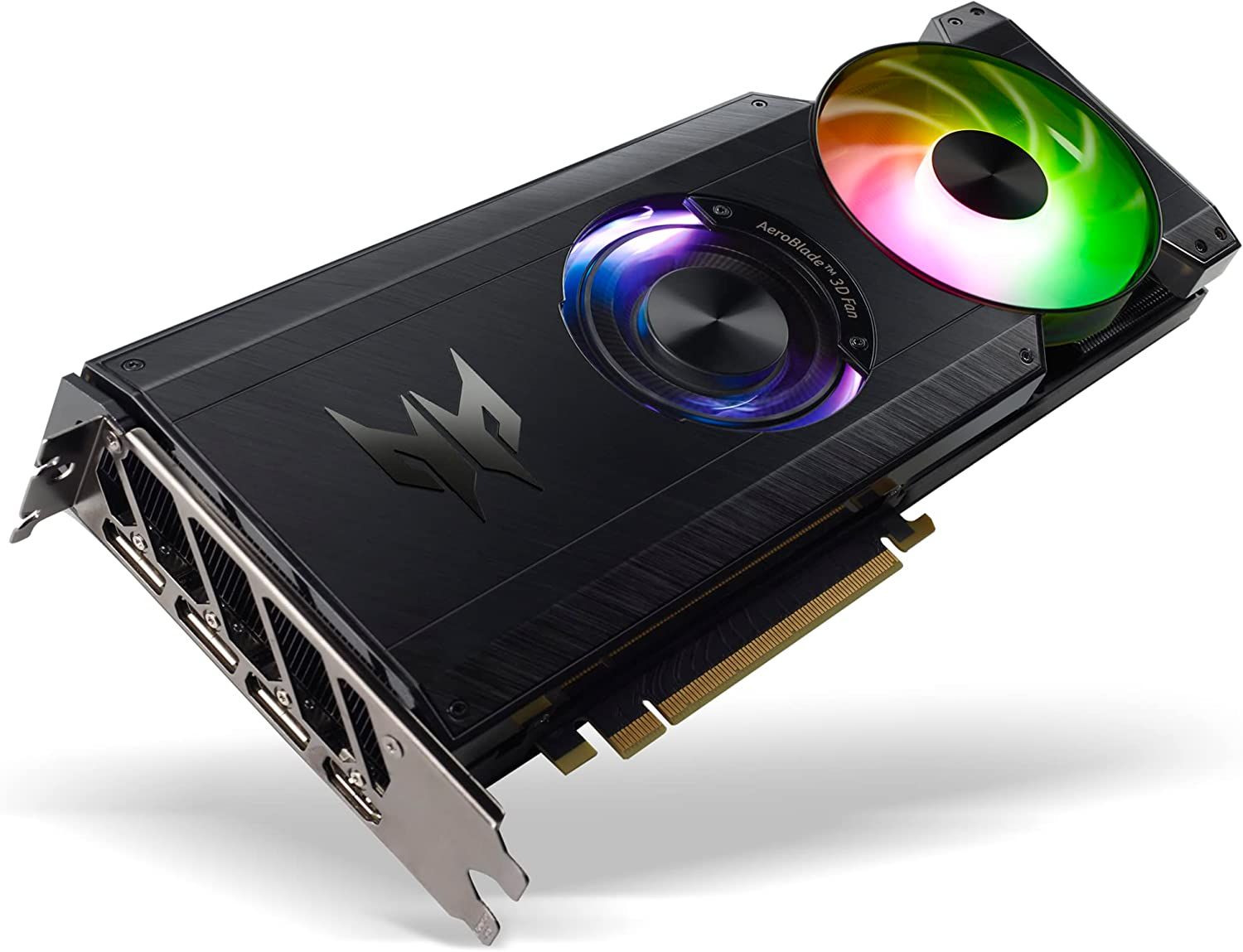
Acer Predator Bifrost Intel® Arc™ A770 OC
The Acer Predator Bifrost Intel® Arc™ A770 OC is a 16GB version of the Intel Arc's highest-end A770 GPU that comes overclocked out of the box. While it does characteristically consume more power than most of its competitors in idle mode, it does offer excellent value for money as Intel's push for the mid-range finds ground for a GPU that can go up against the RTX 4060TI and RX 7600 with ease while offering more memory than any competing product in price range.
- Brand
- Acer
- Cooling Method
- Dual-Fan Air-Cooled
- GPU Speed
- 2200 MHz
- Interface
- PCI-Express 4.0
- Memory
- 16GB GDDR6 (256 Bit)
- Power
- 225W
- Boost Speed
- 2400 MHz
- CUDA Cores
- N/A
- Offers 16GB of GDDR6 memory, twice as much of the GPUs it competes with
- Offers excellent Ray Tracing and rasterization performance vs its direct competition
- Has an excellent price-to-performance ratio versus its competition
- Has improved in performance significantly since release due to multiple driver upgrades
- Requires REBAR support to offer performance gains, making it an issue for older motherboards
- Highly inefficient in terms of idle power consumption
The Acer Predator Bifrost Intel® Arc™ A770 OC 16G is an excellent gaming GPU that also is one of Acer's first forays into the GPU market as an Intel partner. It shares most of the pros and cons of Intel's limited edition A770 GPU lineup but also does so at a price considerably more reasonable than the competition. Unlike some of the cheaper A770 SKUs in the market, this comes with a full 16GB of GDDR6 memory, making it a cut above most of the GPUs it competes with from market leaders Nvidia and AMD.
Intel's Arc A770 is part of Intel's push towards securing a foothold in the competitive mid-range GPU market. Given the plethora of driver updates, and the accompanying performance boosts, the Alchemist-based GPU seems to be aging fairly nicely. Pushed again into focus due to Nvidia's lackluster RTX 4060 and 4060TI GPUs, as well as AMD having a single, slower entry in the RX 7000 series (the RX 7600), the Arc A770 is quickly earning its stripes.
It does have its quirks however; Intel does not recommend purchasing the A770 if your motherboard does not support ReBar which makes up a core component of its performance offerings. Additionally, Intel's driver updates are still, as many would claim, a work in progress compared to more mature offerings from Team Green and Team Red. This means that users need a fairly recent motherboard in order to take full advantage of Intel's highest-end GPU, even if that GPU does need to handle its idle power consumption better than it currently does. However, there are firmware updates out for select models that handle power consumption better post-upgrade.
All in, the Acer Predator Bifrost Intel® Arc™ A770 OC 16G is a solid performer with potentially more performance gains on the horizon, if its driver updates are any indication. With moderate pricing, excellent Ray-tracing performance (despite its limitations in some cases), and decent rasterization, it more often than not decimates its competition in terms of value for money.
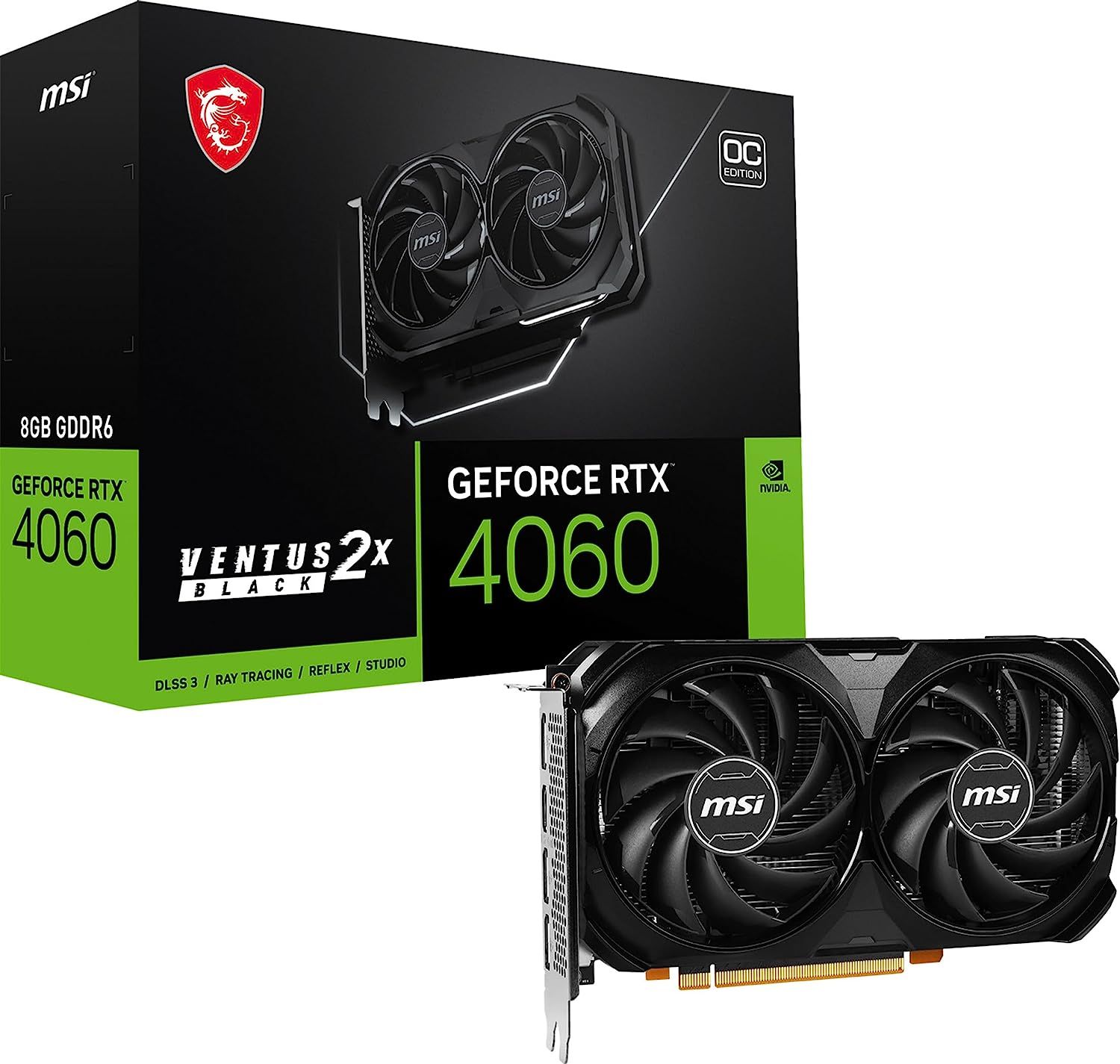
MSI GeForce RTX™ 4060 VENTUS 2X BLACK 8G OC
Entry-Level Ada Lovelace
The MSI GeForce RTX 4060 VENTUS 2X BLACK 8G OC is an excellent GPU offering as far as RTX 4060 offerings go. It offers an excellent, balanced take on Nvidia's entry-level Ada Lovelace-based RTX 4000 series, offering low power consumption, a compact design, and a single 8-pin power connector to handle its power needs, making it a silent performer that delivers on its promise.
- Brand
- MSI
- Cooling Method
- Dual Fan Air-Cooled
- GPU Speed
- 1830Mhz
- Interface
- PCI-Express 4.0
- Memory
- 8GB GDDR6
- Power
- 115 W
- Boost Speed
- MSI Center Clocks: 2505 MHz, Boost Clocks: 2490 MHz
- CUDA Cores
- 3072 Cores
- Is much more power efficient than its predecessor
- Offers excellent DLSS3 performance compared to previous-generation GPUs
- Currently trades at a mild discount over MSRP vs other RTX 4060 SKUs
- Has less memory on offer than the last-generation RTX 3060
- Has no RGB lighting on offer
- Performs quite similar to, occasionally slower than the RTX 3060 without DLSS in play
The MSI GeForce RTX™ 4060 VENTUS 2X BLACK 8G OC is MSI's take on Nvidia's newer RTX 4060 GPU, which launched at the end of June 2023. It happens to be a tradeoff, offering DLSS3 for less VRAM and similar rasterization performance with Nvidia, touting better efficiency than the popular last-generation Ampere-based RTX 3060 GPU.
MSI's Ventus RTX 4060 is a compact, silent performer that gets the job done, offering much better value for money than some of the more over-engineered RTX 4060 SKUs in the market that often edge towards RTX 4060TI territory, in terms of pricing. While it isn't everything most gamers want, it does happen to be the best Nvidia-based GPU you can buy in the sub $300 price bracket currently. However, many users may want to think twice before getting it as an upgrade for RTX 3000 series-based GPUs.
All in all, while Nvidia's pricing on the RTX 4060 has attracted some bad press, it does happen to be the best option if you are in the market for a new Nvidia-based GPU. For those on a budget this summer, it is certainly an easier sell than for those looking for an upgrade to the current generation from Ampere.
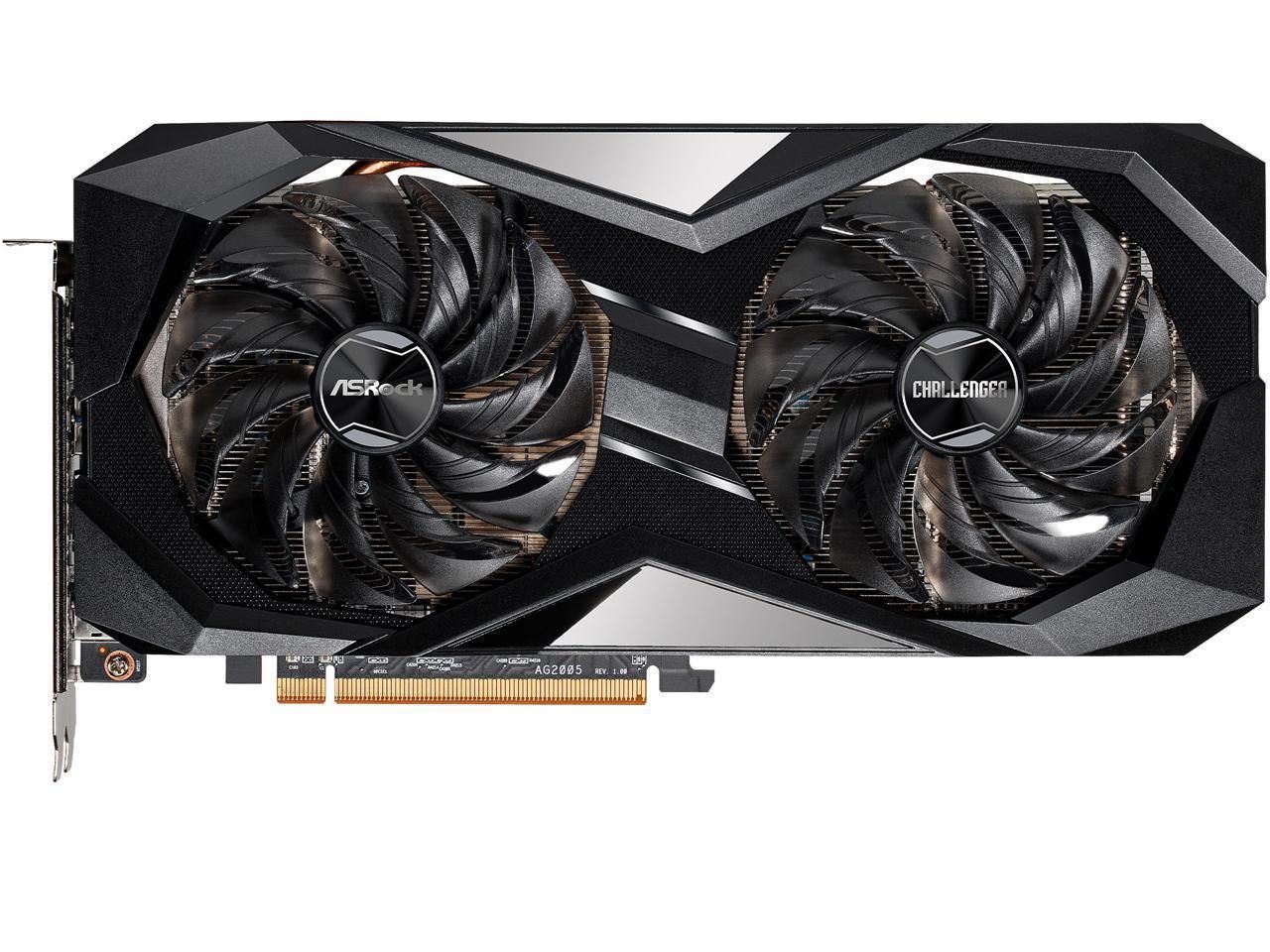
ASRock Challenger D Radeon RX 6700 XT
Challenging Price Points
The ASRock Challenger D Radeon RX 6700 XT is an excellent mid-range GPU that does justice to 1080P and 1440P gamers. While it can handle the bulk of modern games at a respectable frame rate at FHD or 2K resolutions, it also does so at a price point where it decimates Nvidia's RTX 3060/3060TI offerings. It does offer Ray Tracing but the performance overhead is significantly higher than Nvidia's 2nd and 3rd gen RT-core enabled RTX 3000 and 4000 GPUs which tend to be at least a generation ahead of the 6700XT's own implementation.
- Brand
- ASRock
- Cooling Method
- Air-Cooled Dual Fan
- GPU Speed
- 2321 MHz
- Memory
- 12 GB GDDR6
- Power
- 175W
- Boost Speed
- 2581 MHz
- UserBenchmark Ranking
- 122%
- Has plenty of VRAM for modern games with 12GB allowing it to handle a larger number of textures compared to its direct competitor, the RTX 3060TI
- Excellent value for money; cheaper than Nvidia's offerings in the same performance ballpark for rasterization
- Considerably faster than Nvidia's RTX 3060Ti which competes directly with it on price points
- Ray Tracing Performance is lacking as is the case for most RX 6000 series GPUs
The ASRock Challenger D Radeon RX 6700 XT is an aftermarket version of AMD's versatile 6700XT GPU that offers better than stock clocks, excellent value for money, and better performance than Nvidia's RTX 3060TI (when ray tracing is not considered). This makes it AMD's best budget GPU with plenty of VRAM for today's games at its target resolution of 1440P.
It does however take a hit when it comes to Ray Tracing, where the Nvidia RTX 3060TI emerges as a clear favorite. Until recently, it was somewhat plagued with issues when it came to newer games. This was a result of AMD skipping driver updates for the RX 6000 series GPUs in order to get a head start on its new RX 7000 series GPUs. While that has been resolved since AMD unified its driver updates, it has somewhat resulted in a bit of uproar that stretches all the way from the budget RX series GPUs to its flagship RX 6950XT. Although it shouldn't affect your current purchase, it is something that end-users decried when considering the number of developers that Team Red might have employed to publish new GPU drivers that might be too thinly spread going forward.
Update August 2023: With a price markdown of $20 using a coupon and a bundled copy of Starfield Premium edition as part of AMD's rewards program, the RX 6700XT is the gift that keeps giving for mid-ranger gamers, offering astounding value for money as well as excellent rasterization performance versus the competition. With the RX 7600 not being there yet in terms of performance, along with offering lower memory (and a base copy of Starfield as part of its bundle), the ASRock Challenger D Radeon RX 6700 XT remains our pick for the best budget AMD GPU for gaming in 2023.
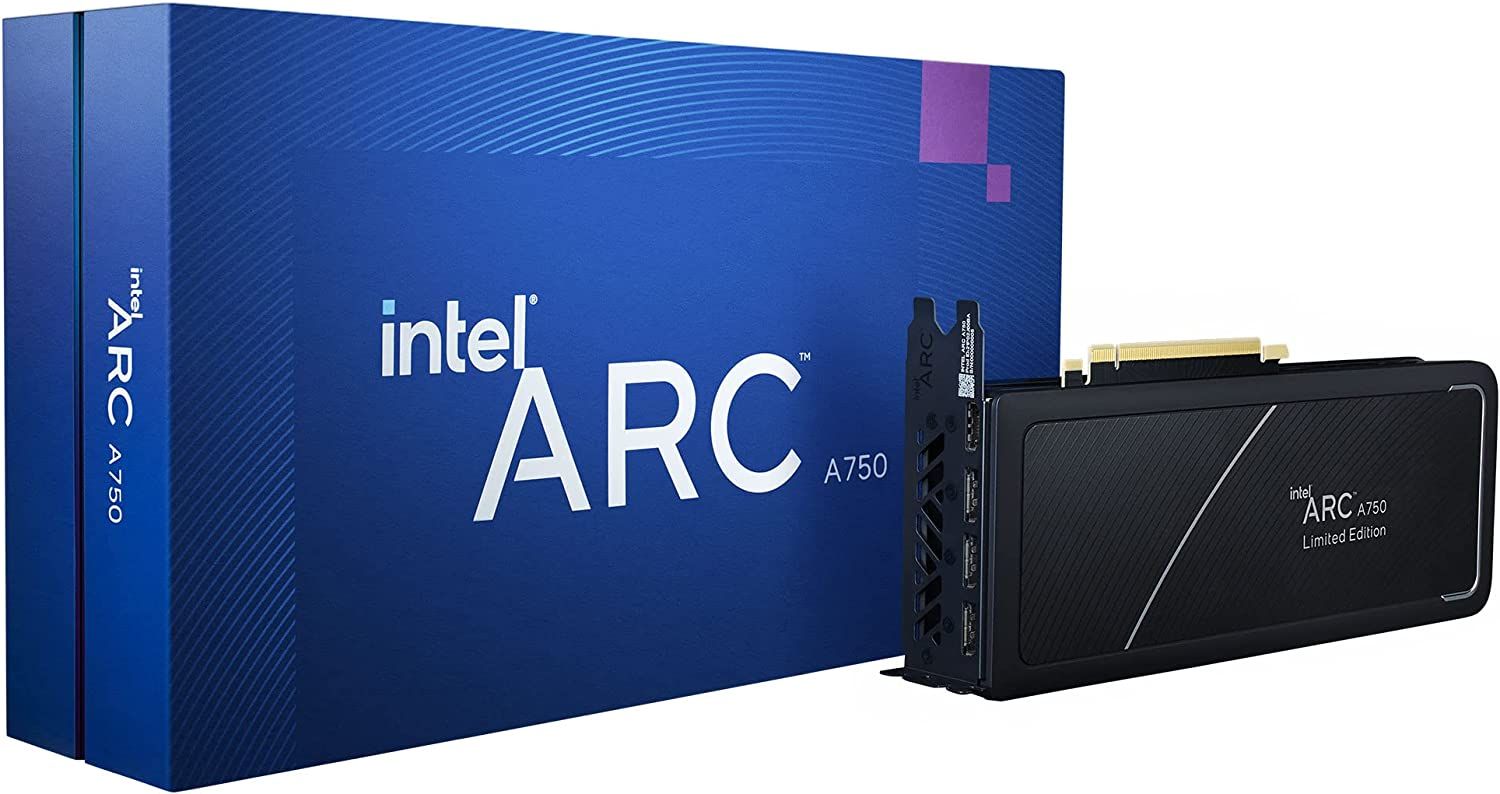
Intel Arc A750 Limited Edition 8GB Graphics Card
Discrete Intel GPU For Less
The Intel Arc A750 is a dual-slot GPU that aims to cater to the entry-level/mid-range GPU market audience as it offers excellent performance coupled with a price that makes it compete with AMD and Nvidia's lower-end offerings with ease
- Brand
- Intel
- Cooling Method
- Air-Cooled
- GPU Speed
- 2050 MHz
- Interface
- PCI-E 4.0 x16
- Memory
- 8GB GDDR6
- Power
- 225W TDP
- Boost Speed
- 2400 MHz
- CUDA Cores
- N/A
- Delivers solid entry-level performance, outperforming the competing RTX 3050 and the RX 6600 by a wide margin
- Priced quite competitively; offers best-in-class price-to-performance ratio to end users
- Has an appealing, understated design theme which makes it look premium while skipping on RGB lighting
- Power consumption is higher than its competition with high idle power consumption
Intel's Arc A750 Limited Edition GPU is one of the best price-to-performance graphics cards you can purchase this year. With performance akin to an RTX 3060, it decimates the competing RTX 3050 at the same price point while offering much better rasterization overall.
It does suffer from the same flaws as its higher-priced sibling, the A770 in terms of substandard drivers and sub-par performance in older titles. However, it is easy to overlook these issues by concentrating on its current-gen performance or simply by accepting the growth pains of a new GPU competitor in the market. This is a GPU that offers much more bang for your buck at its price range than any of its competition with ease.
Update August 2023: The Intel Arc A750 sees a mild price cut from $250 to $220 on Amazon while still offering similar value for money since we had a look at it previously. Given the relatively low price movement on both the last generation RTX 3050 and 3060 GPUs, it remains a competitive entry-level GPU by Team Blue, unless price cuts happen on AMD and Nvidia's end for their last-generation entry level GPUs.
What Should I Look For In A Graphics Card?
Modern Graphic Cards or GPUs are complex pieces of hardware that perform multiple functions for users looking to game, render, run complex deep learning solutions and train AI models, and more. As a result, not all GPUs are made equal, and depending on your needs, you may find some GPUs to be better than others for specific tasks. The same applies to gaming for users and both Nvidia & AMD (and to a lesser extent, Intel) tend to offer different solutions and hardware specifications that often do not translate to absolute performance in games. Here are the following things you would want to consider while buying a GPU in 2023:
- Raw Performance: The raw performance of a GPU, often used interchangeably with rasterization is a key metric to consider when looking at GPU's capabilities. It can be stated as the maximum potential performance a GPU can offer when operating in ideal conditions at a given resolution without considering tech such as Ray Tracing, upscaling tech such as DLSS/FSR, or software enhancement libraries at times. This tends to define what a GPU is capable of for newer games, titles, and raw computing power it can deliver in the best of situations.
- Memory Bandwidth: Graphic cards require the ability to move massive amounts of data while rendering content and gaming and higher bandwidth or higher clocked memory does help. Currently, the fastest GPUs in the market deploy GDDR6 or GDDR6X memory; The RTX 4090 uses 384-bit memory for example to push as much as 1008 GB/S in data.
- Memory Capacity/VRAM: As modern games grow more complex and heavy in terms of textures and their corresponding render resolutions, they do have increasingly taxing demands when it comes to available memory at any given time. This is why many game engines and titles have an increased performance bias for GPUs with larger (> 12GB) memory available, particularly at higher target resolutions.
- Ray Tracing Performance: Ray Tracing does tend to make existing and new game content look significantly superior when implemented properly. It also happens to be considerably taxing at the hardware end. While Nvidia seems to be at the top of its game for Ray Tracing and Intel is following up relatively impressively on its own mid-range ARC product lineup, AMD does have mixed performance at times with Ray Traced content, making RT performance an important thing to consider when buying a GPU as rasterization performance does not tell the complete story in 2023.
- Power Consumption: While modern GPUs have become considerably more power efficient than their predecessors, they have also grown in terms of transistor count, memory density, and functionality, making some of the largest GPUs on offer consume as much as 450W of power while gaming or rendering. GPUs such as that from Intel have significant idle power consumption which can also lead to lower efficiency and higher power consumption for PCs that often need to be turned on 24/7 Finding an efficient GPU that matches your PSU in terms of power draw (ideally at 50% for efficiency reasons) can both, make upgrades and operation seamless while also cheaper to operate in terms of power consumption.
- CPU Bottlenecks: While CPU bottlenecks are rare if you are using a modern processor, they are possible if you are leaning towards the low end or using dated underlying tech. This is particularly true for certain titles that are more CPU-intensive or have a performance bias towards faster CPUs such as esports titles like Company of Heroes for example. Getting a powerful, current-gen processor for gaming would help significantly when it comes to certain titles that are more CPU-bound and limit GPU performance fairly early on in the upgrade cycle.
FAQ:
Q: What is the fastest GPU money can buy currently?
A: Nvidia's RTX 4090 GPUs are the fastest GPUs money can buy with SKUs that cost anywhere between $1500 to $2500 depending on their specific models and cooling solutions on offer.
Q: Is Getting the latest generation of graphic cards important?
A: No. Even GPUs from a generation released a few years ago can handle most modern games. While the latest GPUs are considerably faster and harness newer tech and optimizations, most games are designed for PC hardware across generations, making many older GPUs like the GTX 1080 and RTX 2070 still viable GPUs to have in 2023.
